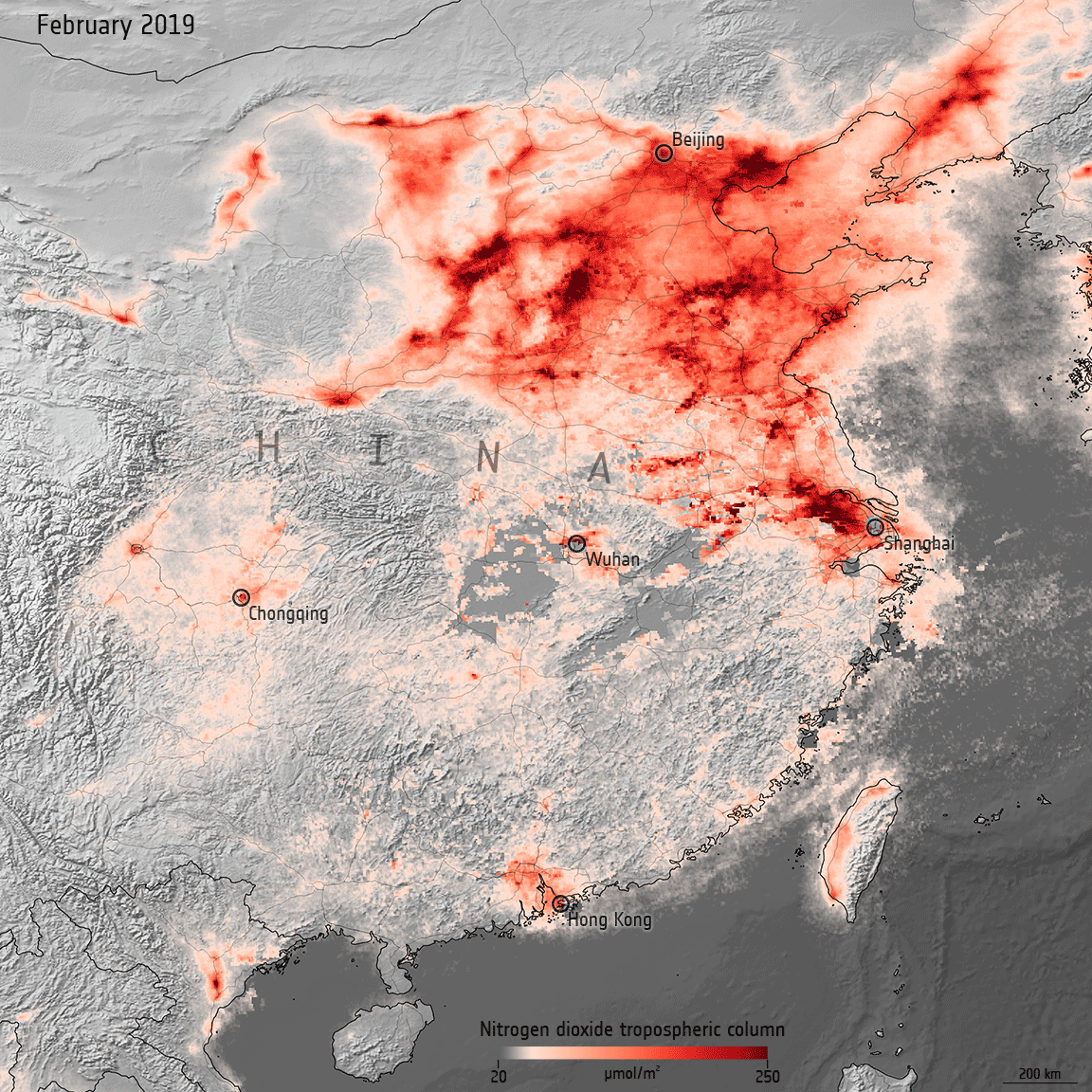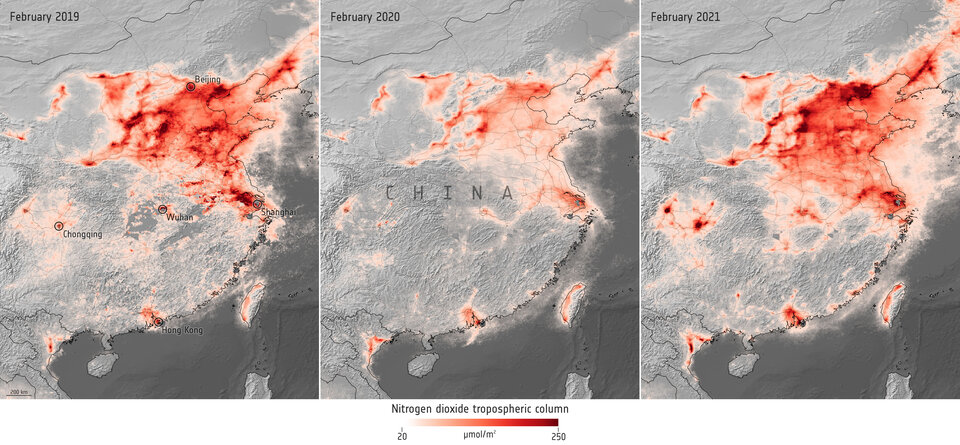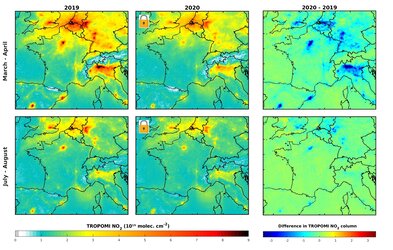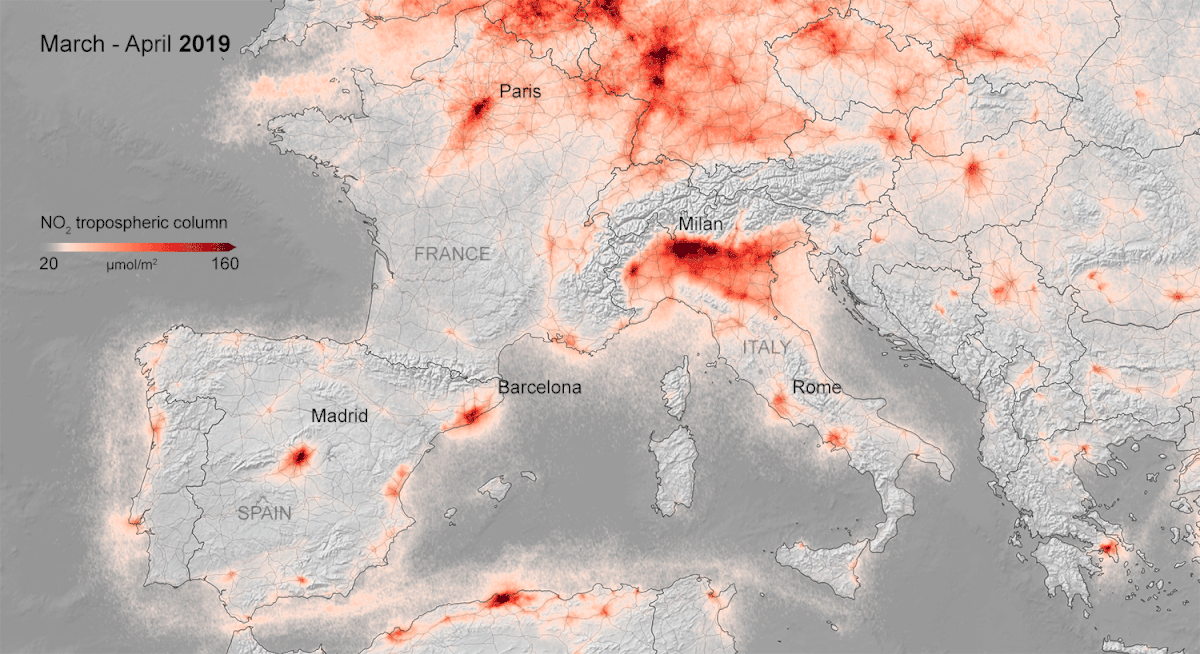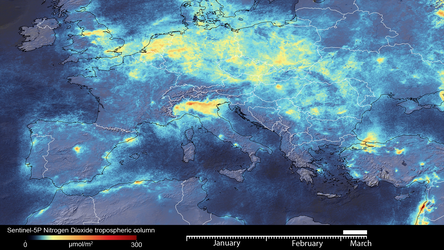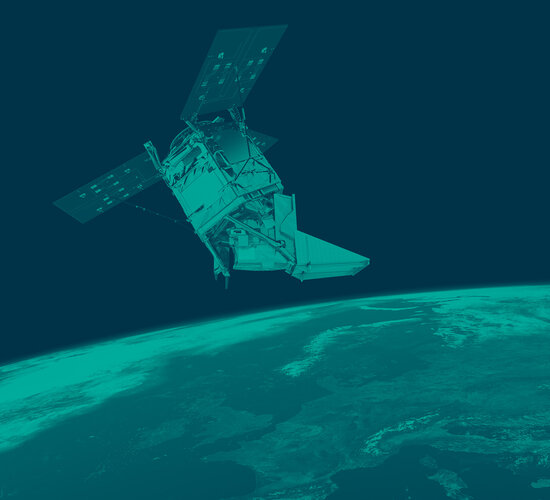Air pollution returning to pre-COVID levels
In early 2020, data from satellites were used to show a decline in air pollution coinciding with nationwide lockdowns put in place to stop the spread of COVID-19. One year later, as lockdown restrictions loosen in some countries and regular activity resumes, nitrogen dioxide levels are bouncing back to pre-COVID levels.
On 23 January 2020, the world saw the first coronavirus lockdown come into force in Wuhan, China in an effort to stop the spread of the illness. This lockdown set the precedent for similar measures in other cities across the country, putting a halt to daily activities including industry and traffic. Factories and other industries were shut down and people were confined to their homes. Similar measures were then put in place worldwide in the following weeks and months.
As a result, a significant reduction in air pollutants across China was detected by satellites. This included reduced emissions of nitrogen dioxide – a gas which pollutes the air mainly as a result of traffic and the combustion of fossil fuel in industrial processes.
Now, more than one year later, as restrictions have eased, the average level of air pollutants has rebounded and is on the rise again. The maps below show the monthly average concentrations of nitrogen dioxide, derived from data from the Copernicus Sentinel-5P satellite, in the central and eastern portions of China in February 2019, February 2020 and February 2021. The map shows the fluctuation in levels between the three periods, with dark red indicating high concentrations of nitrogen dioxide.
The data indicate that nitrogen dioxide concentrations in Beijing dropped by around 35% between February 2019 and 2020, before returning to similar levels in February 2021. Similarly, in Chongqing, nitrogen dioxide dropped by approximately 45% between February 2019 and February 2020, before returning to almost double pre-COVID numbers.
Claus Zehner, ESA’s Copernicus Sentinel-5P mission manager, says, “We expected air pollution to rebound as lockdowns are lifted across the globe. Nitrogen dioxide concentrations in our atmosphere do not depend on human activity alone. Weather conditions such as wind speed and cloud cover also affect those levels, however a large quantity of these reductions are due to restrictions being eased. In the coming weeks and months, we expect increases of nitrogen dioxide concentrations also over Europe.”
These data are thanks to the Tropomi instrument on board the Copernicus Sentinel-5P satellite – the first Copernicus mission dedicated to monitoring our atmosphere.
Claus continues, “The special features of the Copernicus Sentinel-5P satellite, with its high spatial resolution and accurate ability to observe trace gases compared to other atmospheric satellite missions, allows us to generate these unique nitrogen dioxide concentration measurement maps from space.”
The satellite carries the Tropomi instrument to map a multitude of trace gases such as nitrogen dioxide, ozone, formaldehyde, sulphur dioxide, methane, carbon monoxide and aerosols – all of which affect the air we breathe and therefore our health, and our climate.


